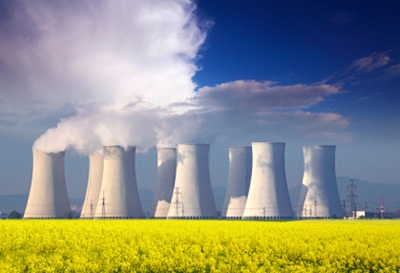| Initial decision by Atomic Safety and Licensing Board clears way for construction of a uranium laser enrichment facility. | ||
| The Atomic Safety and Licensing Board(ASLB)of the US Nuclear Regulatory Commission(NRC)has recommended that a laser process to enrich uranium receives authorization. Although a full license is yet to be issued,the ASLB's initial decision helps to clear the way for Global Laser Enrichment(GLE)–a company set up by General Electric,Hitachi and uranium producer Cameco–to eventually build a full-scale laser enrichment facility near Wilmington,North Carolina. The ASLB document,signed by three administrative judges,states:"In its initial decision,the board authorized the issuance of the license that was requested by GLE." The board's decision had initially been expected by the end of August,but was delayed because the ASLB wanted to ensure that classified and proprietary information was not made public inadvertently. The NRC is expected to formally announce its issuance of a license within weeks,after all the parties involved in the process have submitted their proposed redactions to the unclassified portion of the initial decision text,allowing it to be released publicly. Those redactions are due by October 1 and,according to the NRC's schedule,the license should then be issued by the end of October. Silex Systems,the Australian company upon whose technology the laser enrichment process will be based,immediately welcomed the initial decision.Its CEO Michael Goldsworthy,a physicist who has worked on the enrichment technology since the 1980s,said in a statement including the ASLB's initial decision notice: "The ASLB's initial decision regarding GLE's license is an important milestone for the industry.This is a great day for Australian technology." Wavelength shift "Silex"is an acronym that summarizes the approach,standing for"separation of isotopes by laser excitation". With uranium,the dominant isotope is 238U,and it accounts for more than 99%of the metal in nature.The fissile isotope used in nuclear energy applications is 235U,but it accounts for only 0.7%of the material. To maintain the fission chain reaction needed for nuclear fuel,that 235U concentration needs to be much higher,and the laser enrichment process cleared by the NRC will allow enrichment to a maximum of 8 percent. According to the NRC schedule,construction of the GLE facility near Wilmington may begin after the license is issued in October.Chris Monetta,CEO of the joint-venture company,said in Silex's statement: "We are extremely pleased that the board recommended approval of our application for constructing and operating the GLE laser uranium enrichment plant.It is the result of hard work over many years by the team at GLE and Silex,and represents a significant milestone in the path towards licensing the facility." Proliferation question The NRC began pre-application discussions with the interested parties in 2007,before in December 2008 GLE's then-CEO Tommy Orr wrote to the commission saying that the company intended to submit a license application for a full-scale uranium enrichment facility based on laser isotope separation the following year. Unsurprisingly,many have raised concerns over the development,including the American Physical Society(APS).In June 2010,the APS filed a petition with the NRC,urging a review of the proliferation risks associated with smaller,more efficient nuclear fuel technologies. The APS petition cited the SILEX technique as an example of such a technology,saying that it"carries significant proliferation risks because of its small size and low energy use". Members of the US House of Representatives'Nuclear Security Caucus also raised concerns in a letter sent to the NRC,recalling the infamous theft of plans from the URENCO facility in the Netherlands by Abdul Qadeer Khan: "The uncovering of the A.Q.Khan proliferation network has demonstrated that we can never be too careful in protecting nuclear materials technologies,"they wrote,also in June 2010. Meanwhile in July this year an article published by the Bulletin of the Atomic Scientists warned that laser enrichment could become"America's proliferation Fukushima",highlighting that"at least 27"countries had dabbled with the technology–not least Iran and North Korea. The same article claimed that a wavelength-adjustable CO2 laser sold by the South African company sdilasers to India's Bhabha Atomic Research Center(BARC)government laboratory in Mumbai could be used for SILEX-type enrichment. |






